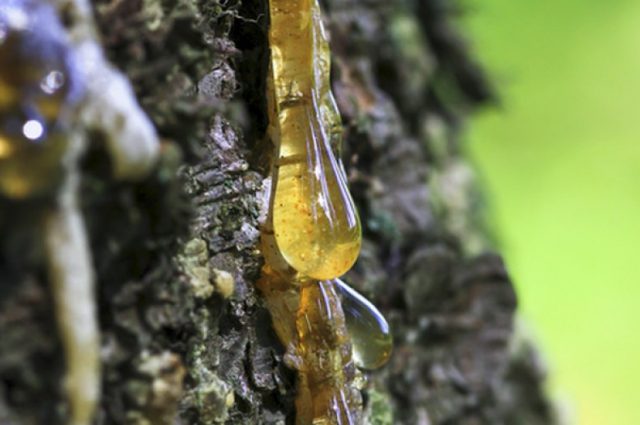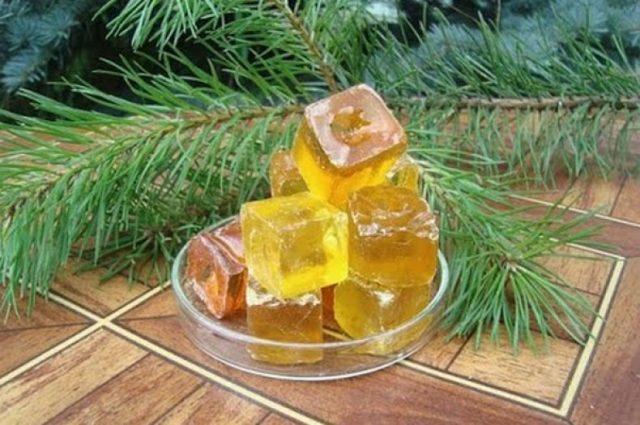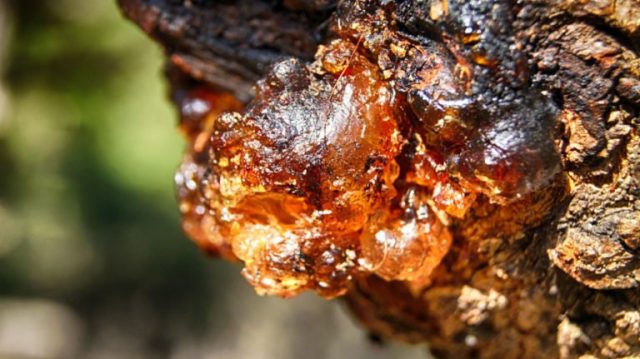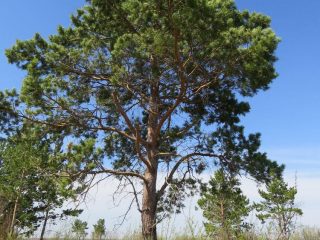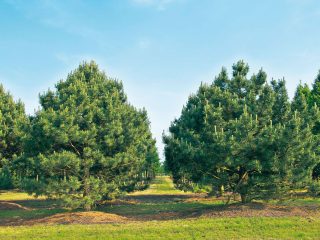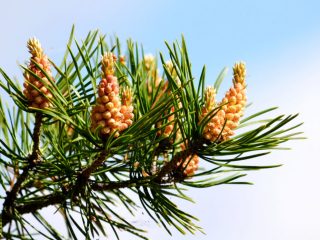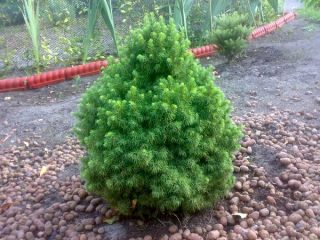Content
The medicinal properties of pine resin are used in dozens of folk recipes. To evaluate the healing properties of the resin, you need to carefully study its chemical composition and understand what properties it has for the human body.
What is pine resin
In folk medicine, resin is called ordinary pine resin - a viscous aromatic substance that is released in places of damage to the bark and solidifies in translucent droplets. Zhivitsa has such an expressive name for a reason, it really contains a lot of life-giving substances with powerful antibacterial and protective properties.
The composition of pine resin is primarily fatty acids and resin esters of retinols. In addition, it contains:
- vitamins A, E and K;
- vitamin D and ascorbic acid;
- vitamin PP;
- iodine, cobalt, zinc and iron;
- chrome, copper and barium.
In nature, pine resin, which has such a rich composition, clogs the wounds on the surface of the tree and does not allow insects, fungi and harmful microorganisms to penetrate under the bark. Despite its viscosity, the resin moves quite easily inside the pine trunk, it contains natural solvents that prevent premature solidification.
Pine resin has an increased value not only for the coniferous tree itself, but also for humans. With proper use, its beneficial properties help in the treatment of a huge number of ailments.
The benefits of pine resin
The valuable properties of pine resin have been known for many centuries - for the treatment of internal diseases and external injuries, resin was used in ancient times. The benefit of pine resin is that it:
- has a pronounced antibacterial effect and prevents the multiplication of viruses, bacteria and fungal microorganisms;
- helps to fight any inflammation, as it is a powerful natural antiseptic;
- benefits with any damage and inflammatory skin diseases - resin not only cleans wounds and ulcers, but also relieves irritation, promotes healing and tissue restoration;
- has an analgesic effect, if you treat a scratch, burn, boil or abrasion with resin, then slight swelling at the site of damage will quickly disappear, and the pain will subside;
- strengthens the immune resistance when used internally - it is useful to take resin in small quantities as a prophylaxis for colds, for any infectious and bacterial processes in the body;
- effectively warms up joints and soft tissues, relieving inflammation and swelling - using pine resin is useful for joint ailments, bruises and sprains;
- rejuvenates the body and serves as the prevention of malignant neoplasms - pine resin contains many antioxidants that promote cell renewal;
- has a useful effect in the fight against ailments of the respiratory system - it helps with bronchitis, colds and pneumonia, as it promotes productive sputum discharge.
In addition to the listed properties, pine resin provides other beneficial effects. In particular, if you regularly chew small pieces of resin, the resin will not only freshen your breath, but will also help strengthen your teeth and prevent the development of caries and periodontal disease.
Pine resin harvesting
Despite the fact that pine resin is sold in specialized stores, you can collect it yourself. The main condition is the presence of an ecologically clean pine forest in relative proximity, located at least 20-30 km from major roads, industrial facilities and cities.
It is best to collect resin from young pines with thin trunks no more than 30 cm in diameter. Although pine trees give sap from spring to late autumn, the best time to collect fresh sap is summer, or rather, the hottest part of it. At high temperatures, the resin moves faster under the bark and flows more easily into the collection container.
The resin collection process is as follows:
- the selected tree must be mentally divided into two parts by a straight vertical line;
- in the central part, right along this line, a container for collecting resin is suspended with a cord, trying to attach it so that it is tightly pressed against the surface of the bark;
- on both sides of the imaginary vertical line, about 20 oblique cuts are made on the bark - 10 on each side;
- the cuts should be at an angle of approximately 45 ° with the lower ends towards the collection container.
After that, it remains only to wait for the right time - fresh pine resin from the cuts will drain into the fixed container in small transparent droplets.
A single pine tree can produce quite a lot of resin, but it is recommended to collect no more than 2 kg of resin from a single plant. Too much resin loss will lead to weakening or even death of the useful tree.
You can collect pine resin not only in summer, but also in the cold season. True, for this you will have to stock up on a sharp, clean knife and look for trees with natural damage on the bark, on which the leaked resin has already frozen. Pine resin build-ups are cut off after wiping the knife blade with oil to avoid sticking.
The use of pine resin for medicinal purposes
Pine resin is used to treat a wide range of inflammatory, cold and infectious diseases. Among the indications for its use are:
- inflammatory diseases of the gums and mucous membranes of the mouth;
- flu, SARS, sore throat;
- toothache caused by caries;
- varicose veins in the legs;
- skin damage - scratches and cuts, purulent wounds and burns, boils and ulcers;
- herpes and fungal diseases;
- mastopathy;
- inflammatory diseases of the genitourinary system in women and men;
- joint ailments - rheumatism, sciatica, arthrosis;
- fractures - during the recovery period, sap has an additional healing effect;
- muscle pain - bruises and sprains;
- ailments of the digestive system - gastritis and heartburn;
- dermatitis and other inflammatory skin diseases.
Pine resin also helps with insect bites - when the resin is applied to the sore spot, the swelling and itching quickly pass. You can use resin to treat insomnia.
Healing recipes
Traditional medicine offers many effective ways to combat ailments using pine resin. Conventionally, all recipes can be divided into 2 categories - external and for internal use.
Among the outdoor recipes, the most popular are balms and ointments based on pine resin.
- Balm for varicose veins. Varicose veins in the legs can lead to serious complications, but in the early stages it responds well to treatment.To prepare a healing balm based on pine resin, you need to mix resin and olive oil in a ratio of 1 to 10, and then put on low heat and cook for about 2 minutes after the product boils. The finished balm is removed from the stove, completely cooled and treated with problem areas on the legs in the evenings, leaving a useful mixture on the skin until morning.
- Compresses for boils. Pure pine resin is good for purulent abscesses under the skin. A small amount of resin must be applied to a small piece of sterile bandage, applied to the sore spot and secured with a medical plaster overnight. You need to repeat the procedure for 3-4 days, after this time, the boil should completely dissolve and not leave behind scars.
- Ointment for purulent wounds and trophic ulcers. Pine resin is able to heal even the most severe skin lesions, and a medicinal ointment is prepared as follows - 50 g of pure resin is mixed with 100 g of animal interior fat and the same amount of beeswax. Thoroughly mixed until homogeneous, the agent is applied with compresses to sore spots for the whole night, after having previously treated the open wound with hydrogen peroxide for disinfection.
- Alcohol tincture for joints. With rheumatism and radiculitis, such a remedy helps well - resin, high-quality water and olive oil are mixed together in equal parts. In a small glass vessel, the mixture is removed for a week in a dark and cool place, and then used for compresses and warming rubbing.
In addition to recipes for external use, there are ways to treat pine resin internally. The natural composition of pure resin is completely harmless to health, although, of course, you need to use resin in small quantities.
The recipe based on resin to strengthen the immune system is very popular:
- pine resin in the amount of 30-40 g per hour is removed to the refrigerator so that the resin hardens properly;
- after that, the hardened piece is taken out and crushed to a state of a homogeneous powder - using a mortar or fine grater;
- the resulting powder is taken in full on an empty stomach three times a day - it can be preliminarily diluted in a glass of water, or you can simply wash it down with liquid.
Traditional medicine suggests taking pine resin inside with exacerbation of gastritis.
- For heartburn, stomach pain and a feeling of heaviness, you can dissolve a small piece of fresh resin daily if unpleasant symptoms occur.
- Usually, pain and discomfort disappear almost immediately after taking the drug - it takes only 5-10 minutes to feel better.
Pine resin inside brings an excellent effect on colds.
- The dosage of the natural medicine is about half a teaspoon, the resin must be absorbed in the morning and evening.
- Since the resin contains a huge amount of vitamins, when it is taken, the protective functions of the body quickly wake up, and the cold recedes.
These recipes are the main uses for pine resin. It is possible to use resin for many other ailments, however, all the same means for external and internal use are used for this.
Contraindications to pine resin
The healing properties and contraindications of pine resin depend on many factors. For most people, small amounts of pine resin are very useful, since the vitamins, acids and minerals in its composition have a healing effect for most ailments.
But in rare cases, pine resin can cause harm. First of all, the resin can cause individual allergies, which is manifested by reddening of the skin, the appearance of a rash, and when used internally, it leads to nausea and headaches.When using pine resin for the first time, it is imperative to conduct a kind of allergic test - apply a little resin to the sensitive skin of the wrist and wait about a day to see if there is a negative reaction. At first, you also need to use the resin inward in minimal portions.
In addition to allergies, pine resin has the following contraindications:
- pregnancy;
- the period of breastfeeding in women;
- children under 7 years of age;
- severe kidney disease.
Use in the economy and industry
The valuable properties of pine resin are used not only for the treatment of ailments. Resin is actively used in the economy, in rural and taiga life, in production.
- First of all, pine resin is an excellent natural sealant. In ancient times, resin was used to treat cracks in wooden log cabins and window frames, and even now in villages, resin is used to seal minor voids in wooden buildings. Pine resin can be used for urgent repairs to boats or rafts if the cut-out plug from the wood has nothing else to fix in the hole.
- Fresh resin can function as a natural lubricant. Pine resin is covered with wooden parts, rubbing against each other as they move, and ropes constantly sliding over a hard surface.
- Resin is an excellent natural glue - anyone who has handled it at least once knows that it is very difficult to wipe off the resin from the fingers. Pine resin sticks just as well to any other surface - wood, fabric and leather, allowing them to be bonded together. In field conditions, resin is used in the construction of huts, for example, branches and spruce branches can be tied much stronger and more reliably if you use a rope soaked in resin.
- The pine resin contains alcohol compounds and turpentine. Therefore, tarred wood is the best material for making a fire, it is highly flammable and burns brightly and well. It is especially important that you can use pine resin for making a fire even in the rain - high humidity does not affect the flammable properties of the resin.
As for the industrial use of pine resin, in its pure form it is used to create ski mastics and sealing wax, in small quantities it is added to ink and printing ink.
Recycled pine resin is used to create valuable products - turpentine and rosin. Turpentine is often used in medicine, as well as in paint and varnish production, it is a part of paints and varnishes, drying oils and mastics, wax. On the basis of turpentine, insecticides are made from garden pests; in small quantities it is added to lubricants for vehicle engines.
Rosin obtained by processing pine resin is mainly used in the paper industry for sizing paper and cardboard. It is also used in the oil and chemical industries, in the manufacture of paints and varnishes.
And of course, one cannot fail to mention the natural jewel made from hardened pine resin - amber. Real amber is highly valued - jewelry and small sculptures, mosaics and carved wall panels are made of it.
Conclusion
The medicinal properties of pine resin are in demand for most diseases, and natural raw materials have very few contraindications. Pure pine resin not only strengthens the body, but also finds its application in everyday life and industry - its importance can hardly be overestimated.


